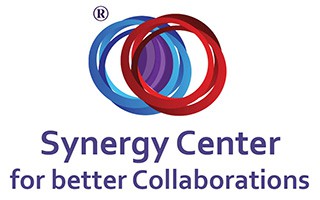Boundaries determine the quality of interactions between diverse parties in an organization. Destructive interactive forms – obscurity, invasion and disconnectedness – arise, because of rigid or blurred boundaries. And so, the role of boundaries in interactions in organizations can’t be understated. As a manager, boundary management is a useful skill – but it seems that few managers and organizational consultants have a mastery of this skill.
It’s important to note that your perception of boundaries is subjective. For example, an employee may perceive your actions and behaviors as invasive (e.g. taking up one’s role) no matter how well intended and justifiable you may think they are. This article discusses three mistakes managers make when they handle boundaries in an organization. Let’s have a look.
Misuse of job Descriptions
Today, more than ever, organizations change much more frequently and faster. Changes are unavoidable, and you must know how to deal with them effectively. Changes can be for better or for worse. They require you redefine boundaries from time to time, because if you fail to do that, then blurred boundaries may result. It was common for organizations to define clear and rigid job descriptions during the 1900s. Not anymore.
It’s surprising that some organizations are still using job descriptions to define and rigidify boundaries between employees. The thing is, this strategy no longer works, because desirable skill-sets (or organizational requirements) change rapidly. In fact, much quicker than most organizations can keep up with. Increasingly, organizations are finding it difficult to update job descriptions constantly. Besides, clear and rigid job descriptions don’t give a complete picture of work norms in an uncertain environment.
The reality is today’s organizations require a worker who’s more adaptable and professional. Skill-sets keep changing, and today’s worker must keep up to speed. And because of this organizational need, some managers can argue that obscure (or blurred) boundaries help to fulfill this need. The basis of the argument is that the manager doesn’t have to overthink about rigid definition of boundaries – job descriptions. The manager simply asks an employee to perform a task, which need to be done.
The problem with maintaining blurred boundaries is that job definition is less formal. This can make it difficult to coordinate expectations, and uncertainty increases. It’s important that when you write descriptions place lots of emphasis on adaptability and teamwork. Just be sure to define the support necessary to achieve a specific job role or task. In essence, this write-up helps to define synergy between people who’re involved in the execution of that role. This also makes it easy to relate team development process to the job analysis. The bottom line is you should relate the job role to the function of the team and someone who occupies that role at the same time.
Don’t confuse flexibility with obscurity. Flexibility enables synergy to develop. On the other hand, obscurity indicates that the organization is “ill”. And because boundaries perception is subjective, just be sure to keep its level below 7 per cent. Let’s take a look at a case study that clearly demonstrates this point.
A Case of Role Descriptions in a Military Organization
During his time serving the country in the military, Dr. Rami Ben-Yshai headed a unit for job descriptions. During the late 20th century, organizations used precise definitions of roles to promote order and reduce confusion. The employee who took up the role couldn’t do other duties other than what the job description said. This limited the employee to perform the defined tasks repeatedly. Employee’s roles were inflexible or rigid.
The problem with this inflexibility was that it was difficult to achieve synergy, especially between the cadets and officers. On one hand, the cadets felt that their role was unchallenging and boring. On the other hand, the officers felt the opposite, and so they felt overburdened.
This rigidity also made it difficult for the organization to recruit a suitable candidate. The organization had a need for flexible job roles, which encouraged teamwork and less specialization.
The solution to this rigidity was to retrain the employees. These retraining programs have been running since then. For example, the program focuses primarily on retraining female soldiers, who studied science in high school, for technological roles. Moreover, the program allocates roles, which engineers and officers took up previously, to non-academic military employees. The program also serves to integrate women in various capacities in the organization.
All-in-all, it’s important to give importance to a team or support that would help the person filling the job role to execute it. Team’s communication and interactions are much more important than precise definition of roles.
Absence of a “Synergy Bubble”
Organizations have different cultures and worldview. Within organizations, departments, divisions or units may have different subcultures. These cultures serve as differentiators from competition. Culture plays a significant role in organization’s success. And so, it’s important to preserve this uniqueness. Unfortunately, nowadays, changes occur much more frequently and faster, and cultures run the danger of getting lost.
As a manager, change management is an important skill. It’s not just about bringing in a new culture, it’s also about preserving the culture, which has defined the organization’s success and pride since its start. Culture is in and on itself a “reality” or a “bubble”. People’s perception of reality (“culture”) is subjective. An organization contains diverse parties who should share the same reality. Though, this shared reality is vulnerable to external environment, which can cause the “bubble” to burst.
This “bubble” isn’t always easy to create and maintain, especially if an external environment in which conflicts and difficulty to coexist characterize the diversity of organization’s members. Moreover, employees can become uncooperative if they feel that their positions are in danger, because of the creation of the “bubble”.
For example, in the University of Haifa, two groups of students – Jews and Arabs – found it difficult to coexist, because of their background in conflicts. The basis of hostility between these two groups was what the Arab students termed as “the Zionist occupation”. It was difficult to create a synergy bubble without taking into consideration its basis of neutrality.
The process of creation of the synergy bubble took a long time, but it paid off in the end. The members set goals, and they gave rewards to those who achieved those goals. This isn’t to say that the award was monetary. Organizations can recognize achievements by giving non-monetary rewards.
Obscure Boundaries
In an organization in which members perceive obscure boundaries as normal, there’s a problem. If you handed out a 7 forms of interaction questionnaire, and the response you get is that not less than 7 per cent of interactions have obscure boundaries, then there’s a problem. Some organizations haven’t left the old practice of using job descriptions to clarify (or rigidify) boundaries (roles). This doesn’t work, because employees must take part in role definition.
When an employee feels that tasks are repetitive, challenging or burdensome, or vice versa, then feelings of invasion, or lack of interaction, can develop. This can prove more destructive to the organization than obscurity. It’s much more helpful to involve employees in direct and open dialogues to define job roles.
Manage Boundaries Effectively to Improve Interactions and Create Synergy
In an environment in which the speed and frequency of changes is high, desired skill-sets and organizational needs change accordingly. In the past, organizations used to define roles using job descriptions. Increasingly, this practice is not practical in post-modern organizations. As a manager, involve your employees in direct and open dialogues to define job roles.



